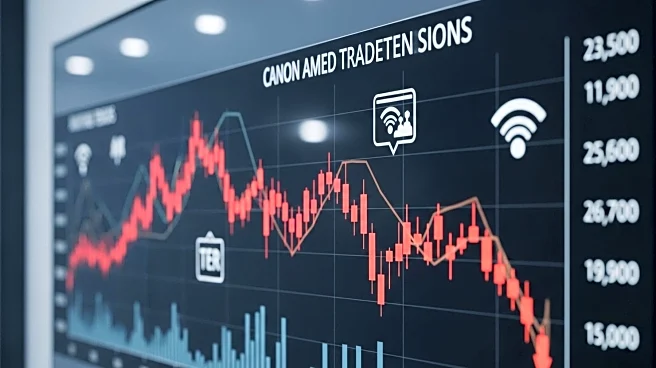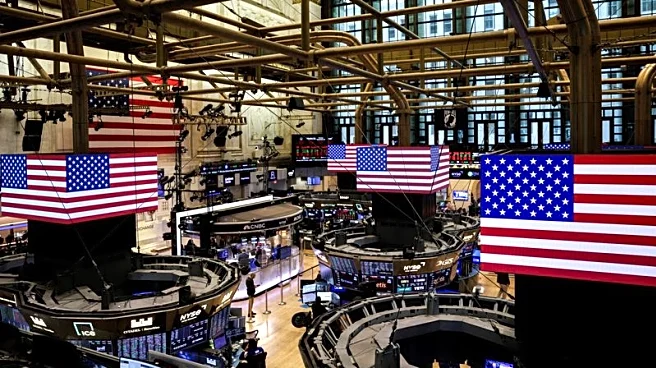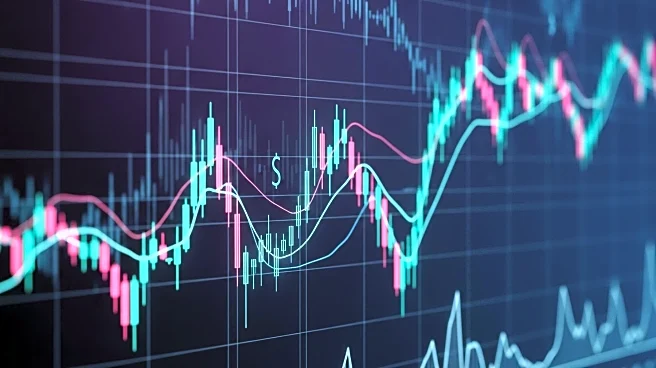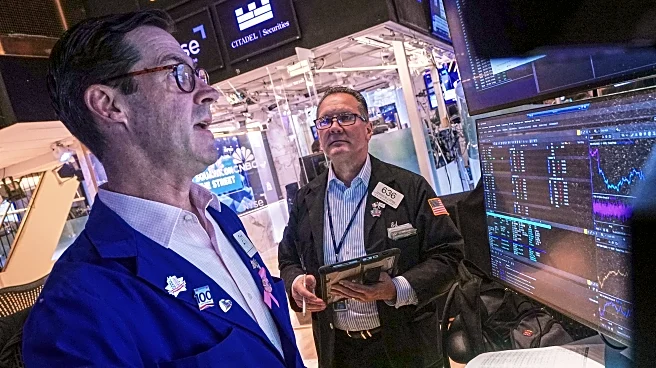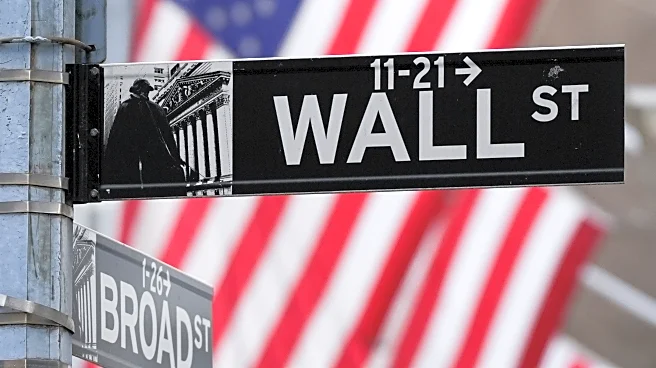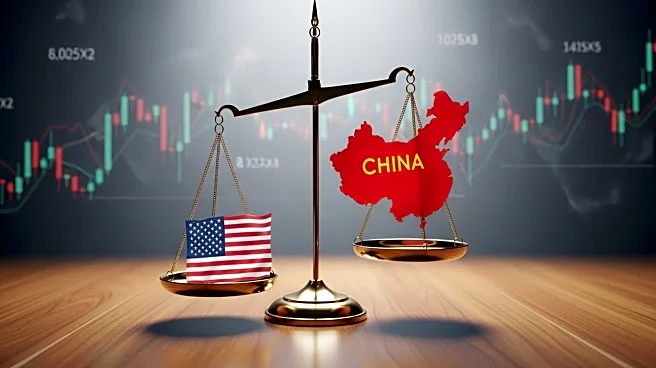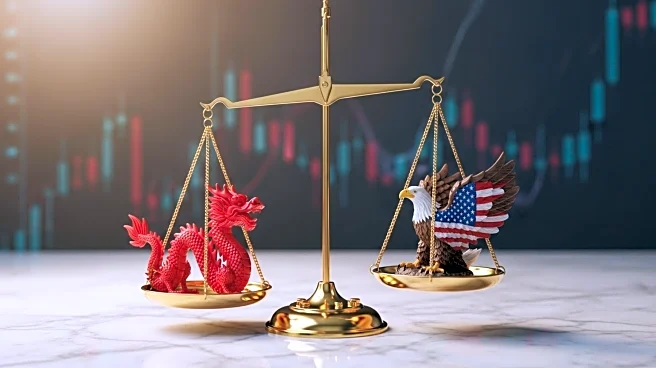What is the story about?
What's Happening?
Investors are increasingly turning to options trading as a strategy to hedge against macroeconomic uncertainty. The S&P 500 has experienced a roughly 3% pullback from all-time highs, prompting concerns about further market declines. The volatility index (VIX) has risen, indicating heightened market anxiety. Investors are adopting vertical put spreads, a strategy that involves buying a put option closer to the money and selling a lower strike put. This approach helps finance the long protection by leveraging the elevated volatility skew, which is the difference between implied volatility on out-of-the-money puts and at-the-money options. This strategy is seen as a cost-effective way to hedge equity exposure, especially in light of ongoing U.S.-China trade tensions and potential earnings surprises.
Why It's Important?
The use of options trading to hedge against macroeconomic uncertainty is significant for several reasons. It reflects investor sentiment and the broader market's response to geopolitical tensions and economic indicators. The elevated VIX suggests that investors are preparing for potential market volatility, which could impact corporate earnings and economic growth. Companies like Nvidia, Broadcom, and Meta have bolstered index earnings, but a weak payroll report or earnings miss could exacerbate market declines. The strategy of using put spreads allows investors to define risk and efficiently use capital, providing protection against significant market downturns. This approach highlights the importance of strategic planning in uncertain economic times.
What's Next?
Investors will continue to monitor economic indicators and corporate earnings reports closely. The potential for further market declines remains, especially if key companies report disappointing earnings or if geopolitical tensions escalate. The strategy of using put spreads may gain popularity as investors seek to protect their portfolios from significant losses. Additionally, the market's response to fiscal policies and Federal Reserve actions will be crucial in determining future volatility levels. Investors may adjust their strategies based on these developments, seeking to balance risk and reward in a fluctuating economic environment.
Beyond the Headlines
The increased use of options trading to hedge against macroeconomic uncertainty may have broader implications for market dynamics. It could lead to shifts in investment strategies, with more investors focusing on risk management and capital efficiency. This trend may also influence the behavior of institutional investors and hedge funds, potentially impacting market liquidity and volatility. The emphasis on strategic planning and risk mitigation highlights the evolving nature of investment strategies in response to global economic challenges.
AI Generated Content
Do you find this article useful?


